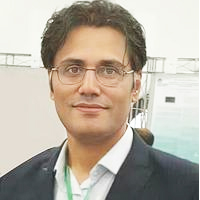Successful treatment of late-onset pulmonary hypertension after atrial septal defect operation with macitentan: Our center experience
Published on: 17th August, 2018
OCLC Number/Unique Identifier: 7844628408
Background: Macitentan significantly improves pulmonary hemodynamics and survival in patients with primary pulmonary hypertension (PPH). Its beneficial effect, however, may be blunted due to the adverse impacts such as anemia and peripheral edema. Pulmonary arterial hypertension (PAH) is a significant consequence of congenital heart disease (CHD). Its presence and severity are associated with increased morbidity and mortality. We tried to evaluate that the effectiveness of the macitentan in patients with late-onset pulmonary hypertension after atrial septal defect operation in our center.
Methods: The effect of a single dose of macitentan (10 mg) on pulmonary hemodynamics, functional capacity was examined in four patients with late-onset pulmonary hypertension after atrial septal defect operation.
Results: The macitentan significantly improved mean pulmonary artery pressure (MPAP), cardiac output (CO), tricuspid annular plane systolic excursion (TAPSE), right ventricle systolic wave(RVS’), 6-minute walking test and NT-proBNP levels compared with before treatment.
Conclusions: Macitentan can be used in patients with late-onset pulmonary hypertension after shunt operation especially atrial septal defect.
High suspicion of paradoxical embolism due to atrial septal Defect: A rare cause of ischemic stroke
Published on: 30th December, 2020
Atrial septal defect (ASD) is common among adult congenital heart diseases but rarely causes paradoxical cerebral embolism. By sharing the ASD diagnosed after the first ischemic stroke attack at the age of 49 and a case of paradoxical cerebral embolism developing accordingly, we aimed to draw attention to the necessity of detailed cardiac examination in patients with cryptogenic stroke.
Closure of Post-infarct Basal Ventricular Septal Defect by Using an Atrial Septal Defect Closure Device: A Case Report
Published on: 25th November, 2024
Ventricular Septal Defect, also known as VSD is a rare and life-threatening complication associated with MI. Therefore, it should be immediately diagnosed and treated. Transcatheter closure of the ventricular septal defect is a new alternative treatment approach compared to surgery. In this case, we presented a patient with post-infarct basal ventricular septal defect whose ventricular septal defect was closed using an atrial septal defect closure device. The ability to successfully close such a large defect via catheter is promising for the treatment of patients with VSD.




